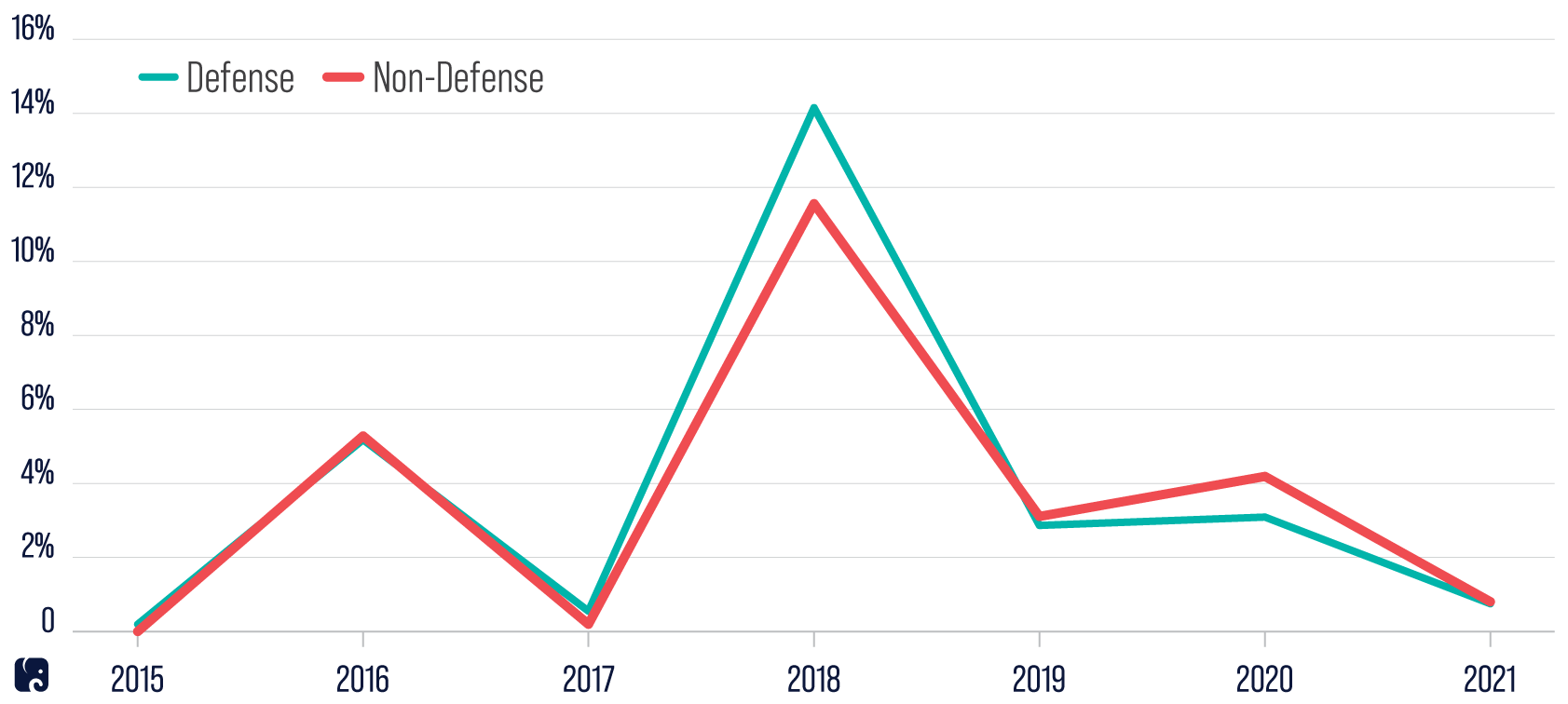President Biden's Budget
KEY TAKEAWAYS
- President Biden’s budget request proposes a 16.5% increase in non-defense discretionary spending in fiscal year 2022, versus a 1.6% increase for national defense.
- The president’s proposed topline for defense is actually a decrease from FY 2021 after accounting for inflation, reversing commitments to provide the resources our military needs to respond to growing threats.
- His budget envisions an ever-greater role for the federal government in the lives and livelihoods of Americans, while abdicating the responsibility to reduce our debt.
On May 28, President Biden released his budget request for fiscal year 2022. While it is common for the budget to be delayed following inauguration, this is the latest submission in modern history.
The budget request proposes $770 billion in non-defense discretionary funding in FY 2022, a 16.5% increase over the FY 2021 enacted level, and $753 billion for national defense, a 1.6% increase. His proposal takes a sledgehammer to the “parity principle,” which has governed bipartisan budget deals over the last decade and given comparable increases to defense and non-defense spending.
Parity in BCA Base Discretionary Authority Changes from Previous Year

The president’s budget lays out his priorities: more big government boondoggles, less support for our nation’s military.
UNDERMINES NATIONAL SECURITY
President Biden’s $753 billion proposed topline for national defense is likely to actually represent a decrease from this year after inflation. On top of responding to the threats posed by China, Russia, North Korea, Iran, and transnational terrorists, Democrats want DOD to confront issues like climate change, without giving it more resources to do the additional work.
Administration officials like Defense Secretary Lloyd Austin and Deputy Defense Secretary Kathleen Hicks have said they agree with the National Defense Strategy threat prioritization. They also agreed with the NDS Commission’s recommended 3% to 5% real year-over-year growth in the defense budget. Ms. Hicks even sat on the commission. But the Biden proposed defense budget reverses that commitment and follows the Obama administration’s mantra of telling the military to do more with less.
grows government
In contrast to the small increase in defense spending, the president’s budget proposes a huge increase in non-defense spending. Instead of focusing on policies that will allow American families and communities to reclaim the ground lost as a result of the COVID-19 pandemic, Treasury Secretary Janet Yellen said the administration wants to “shape our recovery” from the top down and “reorient our framing of U.S. fiscal policy.” This is evident in a suite of spending and policy proposals that discount existing federal investments, particularly those made over the last year, and envision an ever-greater role for the federal government in the lives and livelihoods of Americans.
Since the start of the pandemic, Congress has provided almost $280 billion in emergency funding for education. Now the president is proposing an additional 41% increase in funding for the Department of Education, expanding the federal role in local schools. The president also has proposed to provide two years of universal pre-school and two years of community college for anyone who wants it.
The budget is dogmatic in invoking the “climate crisis” to drive federal programs and spending, including a new Civilian Climate Corps and a program to train veterans for clean energy jobs. It also focuses on far-left initiatives such as environmental justice, proposing a new $936 million Accelerating Environmental and Economic Justice initiative at the Environmental Protection Agency.
The administration would commit resources for an 18.7% increase to the Title X family planning program. The president also has proposed that the Department of Health and Human Services, in the midst of a global pandemic that has taken the lives of more than half a million Americans, focus on climate change, racism, and gun violence research as public health issues. Meanwhile, as we face a historic crisis on our nation’s southern border, the administration proposes virtually no increase in funding for the Department of Homeland Security and divests from key border security projects along the southwest border.
ignores future challenges
According to the administration’s estimates, this budget would spend $6 trillion in just the 2022 fiscal year, with trillion-dollar deficits projected into the future. By 2024, debt as a share of the economy would be larger than when the United States was fighting World War II, and the national debt would climb to 117% of GDP in 2031. President Biden’s budget lacks realistic proposals to reduce this growing debt burden, instead saddling American families with higher taxes and avoiding hard decisions. While it is not particularly challenging to write a budget that ignores necessary trade-offs, it is a notable abdication of leadership to do so. The decision to release this key document on the Friday before a holiday weekend suggests the administration knows it.
Next Article Previous Article
